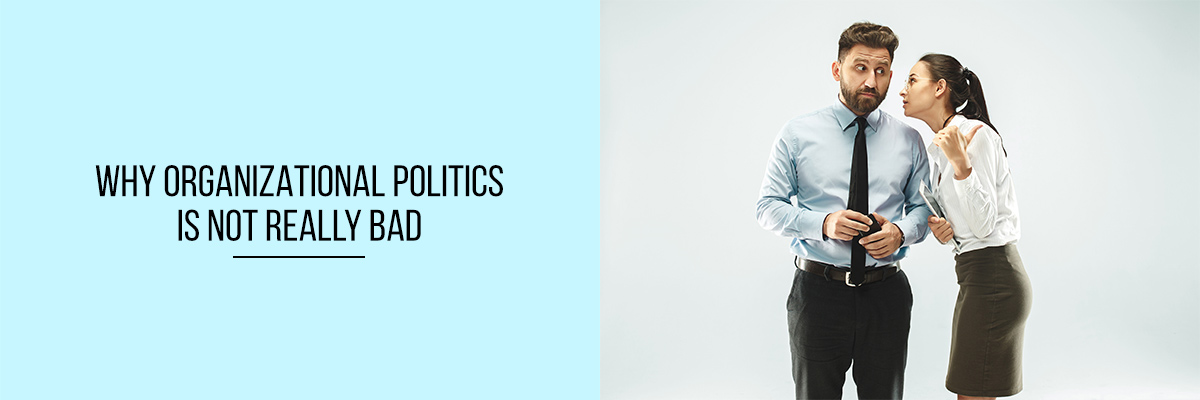Organizational politics refer to behind-the-scenes propaganda and self-interests of individuals who want to gain power or maintain positions in an organization. This includes all sorts of agendas and tactics to hold control of the workplace and showcase power.
It is very common for employees to misuse their power to climb the ladder quickly and destroy someone else’s image in the company. These agendas are mostly not concerned with the objectives of the organization. Such at-work politics generally leads to the disengagement of employees and loss of productivity.
Although there is clearly a bad side to organizational politics, it’s not true all the time. Working in an organization is not only about your daily tasks; it’s also about confidently handling the shifts within the organization, and handling conflicts.
In simpler words, organizational politics is not all about gaining power at the cost of someone else’s career or image, but it’s also about building and keeping relationships to achieve your goals. It’s about tackling difficult situations to maintain your position.
Different types of Organizational Politics
Let’s break down organizational politics into different sections to better understand how it’s not really bad.
1. Self-Promotion
Self-promotion is common among employees who want promotions and credit in the organization. Although some people use politics to do self-promotion regardless of others’ image in the organization or who they harm, many also use this to get the credit they deserve for their hard work.
2. Group work
Group formations are not rare based on common grounds and workflows. This eventually leads to alliances between different teams and departments in the organization. If this is taken to extreme levels, it can be highly detrimental to any organization. But, it can also prove to be beneficial since such groups can increase productivity levels, and promote more agility and efficiency.
3. Internal politics
This is when individuals or teams try to manipulate, put pressure, and influence other individuals internally. These internal politics are done to gain profit regardless of what it takes to achieve it. Since internal politics are used by almost all individuals, it can prove to be positive since everyone is competing to provide the best so as to best project the company’s ideas and objectives.
4. Control
All these politics end with power and control in an organization. Groups or individuals with power and recognition might use organizational politics to block other potential candidates to gain popularity or be recognized. This includes blocking and rejecting their ideas, work proposals, etc.
As leaders in organizations, you can gain benefit from this situation by showcasing authority and promoting company policies by spotting the gaps in such incidents. This way you can increase your own influence within the organization as a powerful leader.
5. Not ready for change
Some employees are well satisfied with their positions in the company and want to maintain their position at all costs. They use organizational politics to clear roadblocks or any threats to their position.
Conclusion
Just like the power that comes in all forms in an organization, politics used and required are different based on the big or little things you need to achieve. Some might look for shortcuts to achieve great things in less time, others will only go with the flow and rightfully use organizational politics to defend themselves from others’ agendas.


